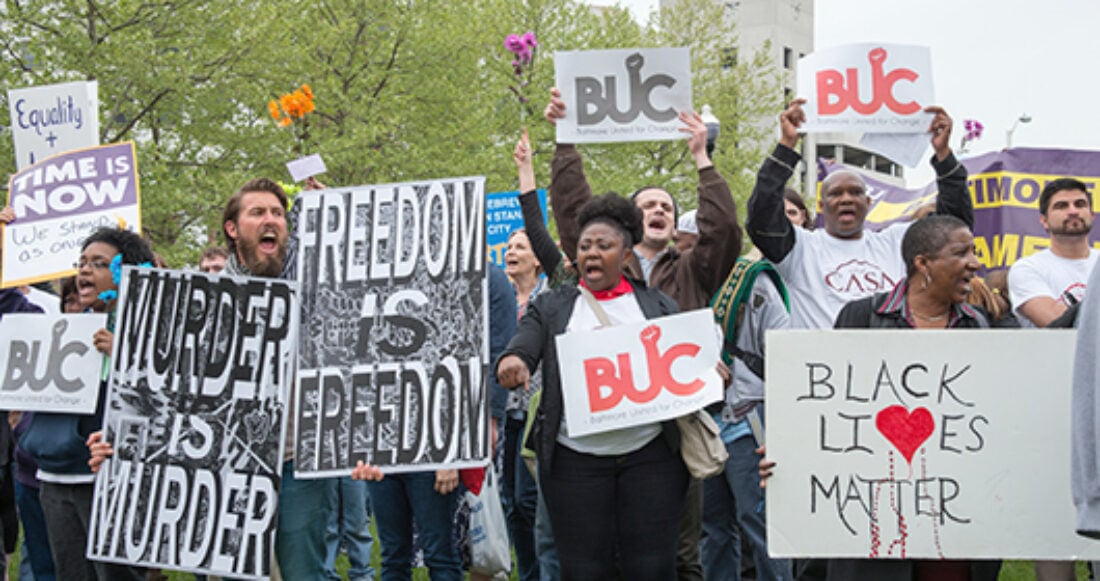Five Questions with Casey: Sophie Dagenais on the Baltimore Unrest and the Way Forward


As director of the Baltimore Civic Site team, Sophie Dagenais oversees Casey’s community-based investment strategies and grant-making activities in Baltimore. She also advises the Foundation on investing in the East Baltimore Revitalization Initiative, a major community and economic development project aimed at transforming an 88-acre East Baltimore neighborhood.
Prior to joining Casey, Dagenais served as chief of staff for Baltimore Mayor Stephanie Rawlings-Blake. A member of the New York and Maryland Bar Associations, she previously worked as a partner at Ballard Spahr LLP and as general counsel and chief administrative officer at a real estate investment-banking firm in New York City. Dagenais graduated from McGill University Faculty of Law in 1988.
In this Five Questions edition, Dagenais discusses the importance of bringing all Baltimoreans to the table — particularly those with limited access to opportunity — to achieve lasting, positive change.
Q1. What role can foundations play after civic unrest or during times of community stress?
Foundations can help provide support and a safe space to bring people together for healing. We should also look at ourselves, and philanthropy more broadly, to see how our own processes and procedures may undermine fairness, access and opportunity. As long as children like Freddie Gray and their families are disconnected from decision-making processes, and as long as systems and communities are not aligned and informed by each other, it will not be possible to achieve large-scale social change.
Q2. The Casey Foundation has invested in Baltimore’s struggling neighborhoods for decades. How did the unrest change your team’s approach to its work in the city?
Although Casey is a national foundation, Baltimore is our hometown. We have a long history of supporting pivotal civic organizations and an ambitious agenda to improve conditions for children and families in East Baltimore. In response to the events following Freddie Gray’s death, however, we are amplifying our work throughout Baltimore.
For instance: We have accelerated planning efforts for a national project — set to launch in Baltimore — that will aid older youth and young adults from low-income families. This summer, we also bolstered enrichment opportunities and jobs for city children and youth and increased our support for community organizing and engagement, in addition to building young people’s capacity to advocate for themselves and their communities.
Q3. What community needs are you hearing about now — five months after the events of the spring?
The needs haven’t changed, but the way we hear them and seek to better understand them may well be changing. We know that we can’t address the root causes of injustice by leaving any part of the community out. Yet structural racism and a persistent disconnect between systems and the people they serve have undermined the community for decades — if not for our city’s entire history. Most recently, we’ve expanded our conversations with youth, residents and civic leaders. At the same time, we’ve been working internally and with our partners to ensure these vital community voices are informing our decisions and policy agendas.
Q4. What is the Foundation’s strategy for responding to the unrest earlier this year?
As a Foundation, we have been working to address inequality and promote inclusion through such efforts as Race Matters and Race for Results. And we know that bringing successful approaches to scale requires evidence and a relentless pursuit of equality. The unrest in Baltimore and similar events around the nation tell us that it’s critical to focus even more intently on this work.
Q5. If the unrest presented an opportunity moment for Baltimore, what should be different five years from now to show that real change occurred?
Here’s where we are now: Recent data suggest that 34% of Baltimore City’s kids live in poverty, and this poverty rate jumps to nearly 50% for kids in Freddie Gray’s neighborhood. We also know that the unemployment rate is high — 35% — for black youth ages 16–24. For their white and Hispanic peers, this rate is much lower — 11% and 12%, respectively.
Here’s a potential path forward: We must support policies and strategies that connect families and youth to economic opportunities, which can help substantially reduce these disparities in the next five years. Another must-have is persistent engagement so that, five years from now, people feel that their voices have been heard and that they are a part of the solution. That’s the call to action.





